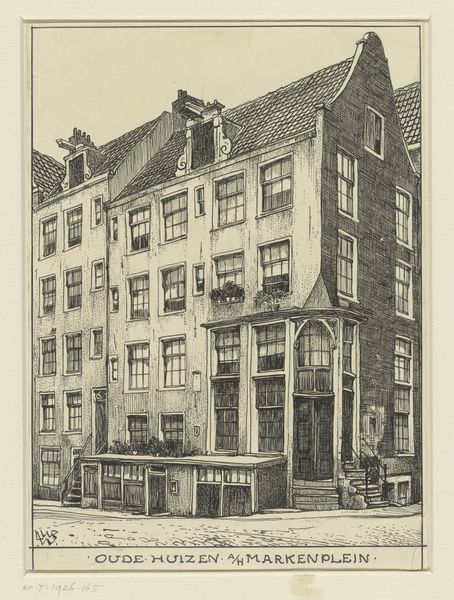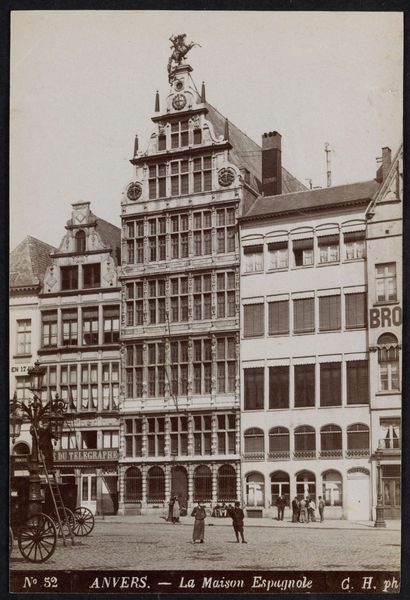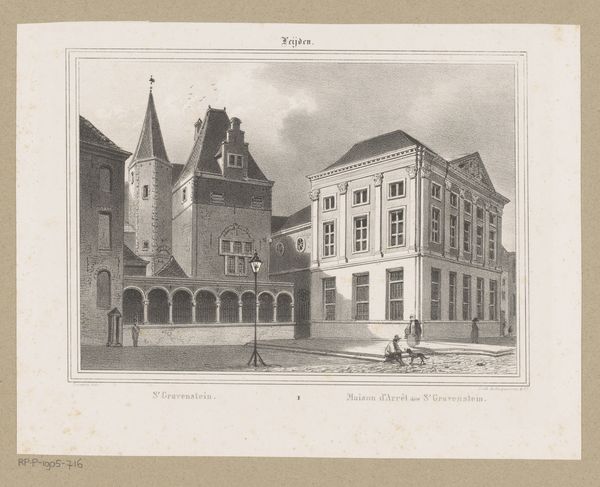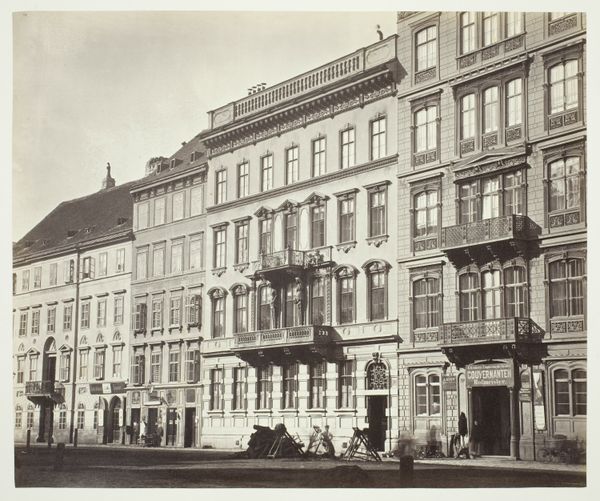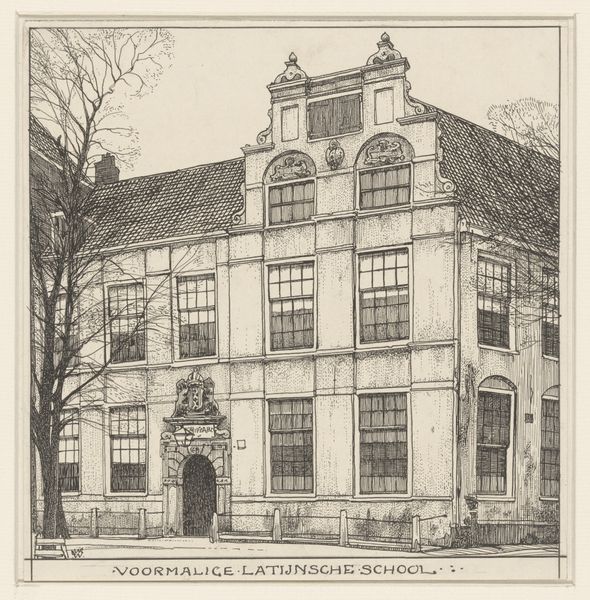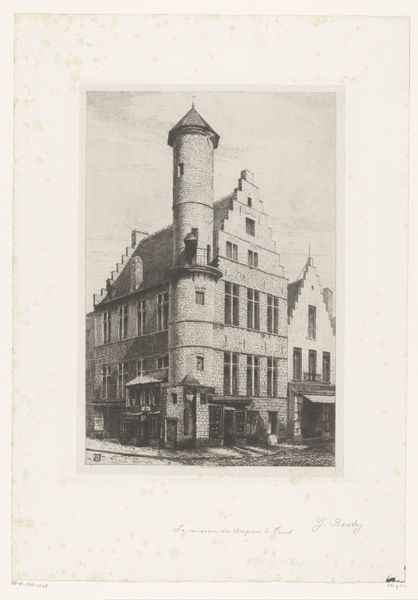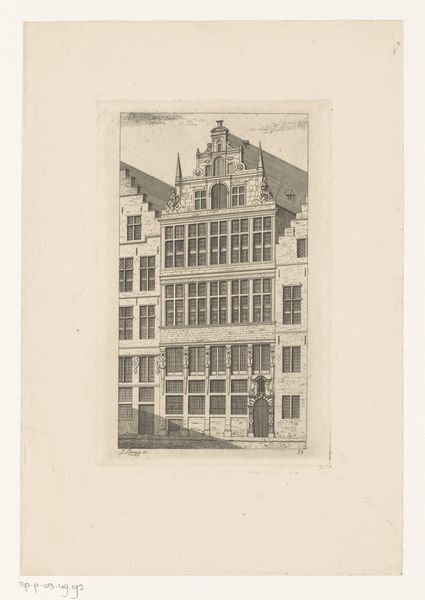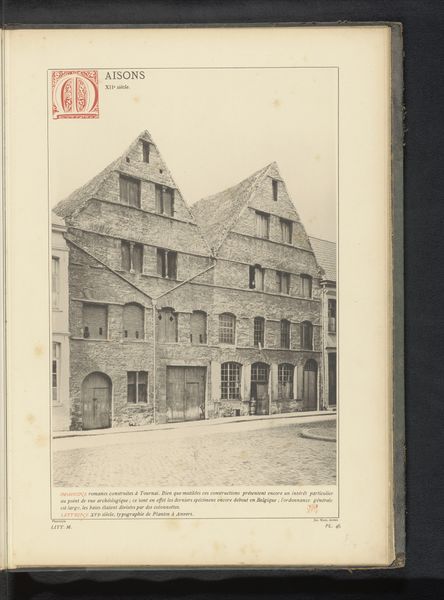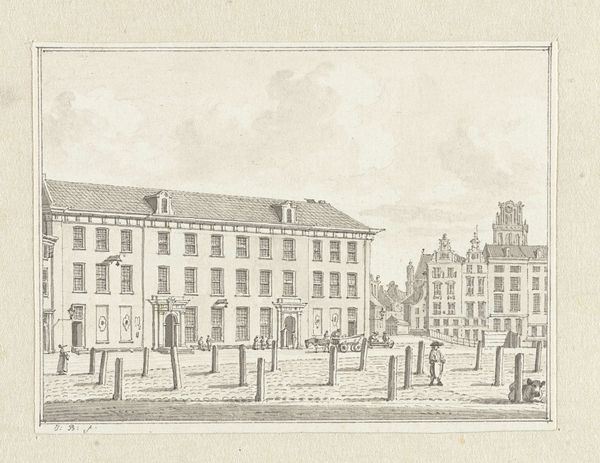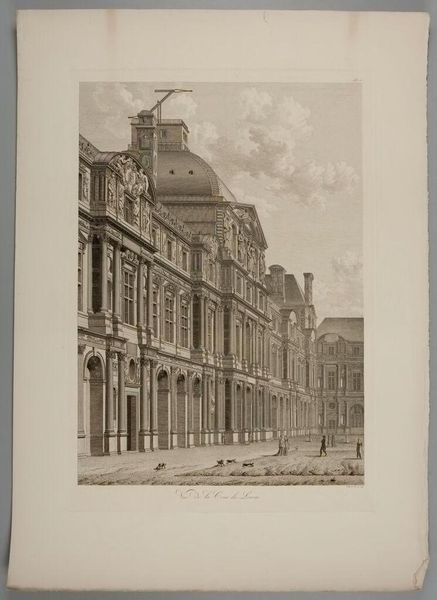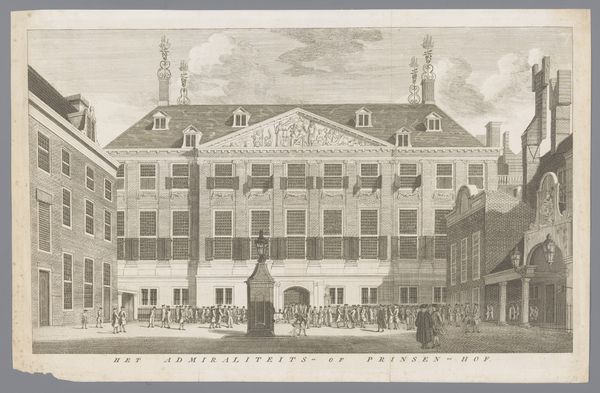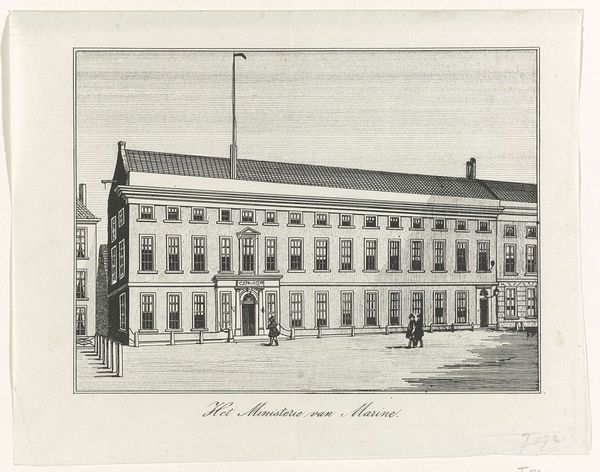
Het nieuwe gebouw van de Kweekschool voor Zeevaart, te Amsterdam c. 1874 - 1888
0:00
0:00
smeetontilly
Rijksmuseum
drawing, print, engraving, architecture
#
architectural sketch
#
drawing
#
historical design
# print
#
historic architecture
#
architectural drawing
#
architecture drawing
#
cityscape
#
engraving
#
architecture
Dimensions: height 142 mm, width 194 mm
Copyright: Rijks Museum: Open Domain
Editor: So, this is “Het nieuwe gebouw van de Kweekschool voor Zeevaart, te Amsterdam,” made sometime between 1874 and 1888. It's a print—an engraving, to be exact—showing the new Naval Training School in Amsterdam. I’m struck by how detailed the brickwork is, but it also feels very formal. What strikes you about it? Curator: I’m drawn to the processes involved in its creation and the statement the building itself makes about labour and industry. Look at the engraving technique—the labor involved in translating architecture into a reproducible image! Consider how that act, creating multiple copies, democratizes the consumption of this design. Editor: Democratizes? Curator: Exactly. The print medium allows wider access to this architectural vision. Who was meant to view this print? The students attending the school? Or potential investors? Understanding the intended audience reveals clues about the value of maritime education in Amsterdam at the time. What materials do you think were used in the actual building’s construction and how does the engraving convey that materiality? Editor: Well, looking at the engraving, I’d guess brick, maybe some sandstone for ornamentation? But seeing it in a print flattens it out, doesn't it? It's a representation of labor, not the actual labor of construction. Curator: That flattening is significant! The engraving transforms the physical labour of bricklaying into an image for contemplation and perhaps, for promoting further industrial advancement. It shifts the building’s meaning, separating it from its purely functional existence. Editor: I see your point. The print is like a form of marketing, reflecting the values associated with the school itself and projecting those values to the broader public. Curator: Precisely. And consider the consumption of these images – each print potentially furthering a particular vision of Dutch progress through naval power and technological advancement. It speaks volumes about material aspirations during that period. Editor: This has given me a totally new way to think about prints of architecture. It's not just documentation, but active participation in shaping perceptions about materials, labour and progress. Thanks!
Comments
No comments
Be the first to comment and join the conversation on the ultimate creative platform.
